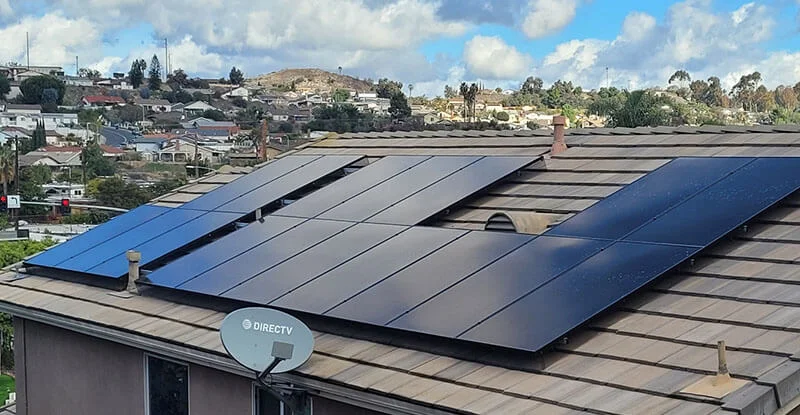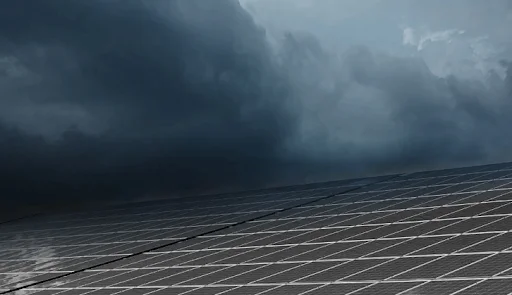Choosing the Ideal Roof for Solar Panels: What You Need to Know

Solar panels are popular for reducing electricity bills and moving towards cleaner energy. However, only some roofs are suitable for solar panels. The type of roof you have can significantly impact the efficiency and effectiveness of your solar power system. This article will guide you through the key factors to consider when determining if your roof is ideal for solar panels, helping you make an informed decision.
Choosing the Ideal Roof for Solar Panels: What You Need to Know
Solar panels are popular for reducing electricity bills and moving towards cleaner energy. However, only some roofs are suitable for solar panels. The type of roof you have can significantly impact the efficiency and effectiveness of your solar power system. This article will guide you through the key factors to consider when determining if your roof is ideal for solar panels, helping you make an informed decision.
Understanding the Basics of Solar Panel Installation
Before discussing the specifics of roof types, it's important to understand the basic requirements for solar panel installation. Solar panels work best when they receive direct sunlight most of the day. This means your roof must be positioned and angled to maximize sun exposure.
Key Considerations for Solar Panel Installation
- Roof Size:The amount of space available on your roof will determine how many solar panels can be installed. More space allows for a larger solar array to generate more electricity.
- Roof Orientation: The direction your roof faces is crucial. In the northern hemisphere, south-facing roofs are generally the best for solar panels because they receive the most sunlight throughout the day. However, east- and west-facing roofs can also work, though they may need to be more efficient.
- Roof Angle: The angle or pitch of your roof affects how much sunlight hits the panels. A roof pitching between 15 and 40 degrees is ideal for solar panel installation.
- Shading: Any shading from trees, buildings, or other obstructions can reduce the efficiency of your solar panels. Assessing how much shade your roof gets during the day is important.
Types of Roofs Suitable for Solar Panels
1. Asphalt Shingle Roofs
- Compatibility: Asphalt shingle roofs are generally compatible with solar panel installations. The shingles provide a good surface for mounting the panels; most solar installers are familiar with this type of roof.
- Durability: Solar panels can be installed on asphalt shingle roofs without causing significant damage. However, it's important to ensure that your roof is in good condition before installation, as the panels will add weight and may stress older roofs.
- Cost: Installing solar panels on an asphalt shingle roof is usually cost-effective, making it a popular choice for homeowners.
2. Metal Roofs
- Compatibility: Metal roofs, especially those with standing seams, are ideal for solar panels. The panels can be attached without drilling holes, reducing the risk of leaks.
- Durability: Metal roofs can easily support the weight of solar panels, and they often last as long as or longer than the panels themselves, reducing the need for roof replacement.
- Cost: Metal roofs can be more expensive to install initially, but their durability and low maintenance costs can make them a good investment when combined with solar panels.
3. Tile Roofs
- Compatibility: Solar panels can be installed on tile roofs, but the process is more complex. Installers need to be careful to avoid damaging the fragile tiles.
- Durability: Tile roofs are durable and can support the weight of solar panels, but broken tiles can lead to leaks if not handled properly during installation.
- Cost: Installing solar panels on a tile roof can be more expensive due to the extra labor required to avoid damaging the tiles and ensure a secure installation.
4. Flat Roofs
- Compatibility: Flat roofs can be excellent for solar panels, but the panels must be mounted on angled racks to ensure they receive enough sunlight. This adds to the complexity and cost of the installation.
- Durability: The weight of the panels and racks must be carefully distributed to avoid damaging the roof. Flat roofs are more prone to water pooling, so proper drainage is essential.
- Cost: Installing solar panels on a flat roof can be more expensive due to the need for specialized mounting equipment.
Factors Affecting Solar Panel Efficiency on Different Roofs
1. Roof Condition
- Inspect your roof: Before installing solar panels, have a professional inspect your roof to ensure it is in good condition. If your roof needs repairs or replacement, it's best to take care of that before installing the panels.
- Longevity: Consider the age of your roof. If it's nearing the end of its lifespan, replace it before adding solar panels. This way, you won't have to remove and reinstall the panels when replacing the roof.
2. Roof Size and Shape
- Maximizing Space: Work with your installer to find the best layout for your panels to maximize your roof space. This might involve placing panels on multiple roof sections to capture the most sunlight.
- Avoiding Obstructions: Chimneys, skylights, and other roof features can create obstacles that limit where panels can be placed. Your installer will need to design a system that avoids these obstructions.
3. Regional Climate
- Sunlight Hours: The number of sunlight hours your region receives each year will directly impact the amount of electricity your solar panels can generate. Areas with more sunlight are better suited for solar power.
- Weather Conditions: Extreme weather conditions, such as heavy snow or strong winds, can affect the performance and durability of your solar panels. Your installer should take these factors into account when designing your system.
Common Mistakes to Avoid When Choosing a Roof for Solar Panels
Ignoring Roof Condition:
- Installing panels on a roof that needs repairs or is nearing the end of its lifespan can lead to costly issues.
- Tip: Always have your roof inspected by a professional before installing solar panels. Address any necessary repairs or replacements before moving forward with the installation.
Overlooking Roof Orientation and Angle:
- Panels installed on a poorly oriented roof may need more electricity to make the investment worthwhile.
- Tip: Work with a professional installer who can assess your roof's orientation and angle and recommend the best placement for your panels to maximize sun exposure.
Failing to Consider Shading:
- Shading from trees, buildings, or other obstructions can significantly reduce the efficiency of your solar panels.
- Tip: Conduct a shading analysis to determine how much sunlight your roof receives throughout the day. If shading is an issue, consider trimming trees or choosing a different section of your roof for the panels.
Maximizing Solar Panel Efficiency on Your Roof
- Choose High-Efficiency Panels: Panels with higher efficiency ratings may cost more upfront but can provide better returns in the long run.
- Optimize Panel Placement: Focus on south-facing sections of your roof or areas with the longest sun exposure.
- Regular Maintenance: Regularly clean the panels and check for any damage or obstructions to ensure maximum efficiency.
Conclusion
Choosing the ideal roof for solar panels involves considering several factors, including roof type, size, orientation, and condition. By understanding these factors and avoiding common mistakes, you can make an informed decision that maximizes the efficiency of your solar power system. Whether you have an asphalt shingle roof, metal roof, tile roof, or flat roof, working with a professional installer and selecting the right equipment can help you achieve the best results for your solar investment.
See More Insights
Assessing the Durability of Solar Panels: Can They Withstand Hurricanes and Extreme Weather?
Join Us, Lead the Crown Change
Ready to power up? Partner with us. From comprehensive partner programs to media kits and warranty claims, all the support you need is just a click away.


